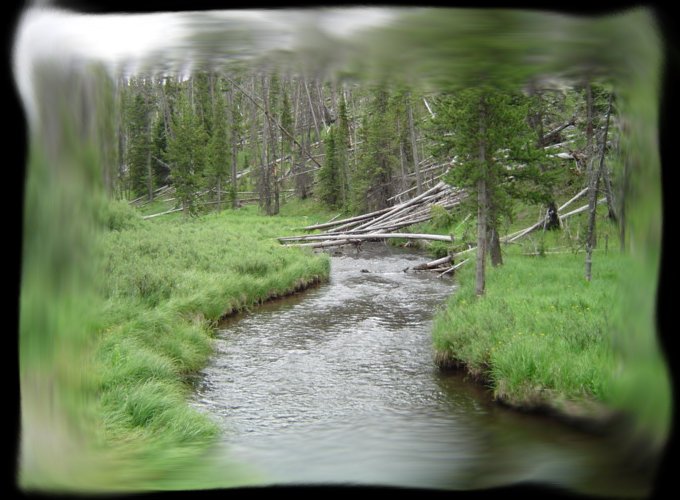|
The Course of Life |
|
· In many myths the river is often portrayed as being male. For example, the great river Xanthus--also known as Scamander--is a male river with a brother, Simois, who tries to fight against Achilles during the Trojan war (21.354-356). Geographically, the river Xanthus served as a sort of artery for the Trojans (Homer 677,683). Why Xanthus is portrayed as male could be for a variety of reasons such as for the below listed characteristics. Another male river in mythology is the Dnieper of Russia--who became enraged when his sisters tricked him (Dalal 14-15). Many of the cultures that portray rivers as male have male-dominated societies. · In the same respect, however, cultures that hold to belief that the mother goddess--whatever form she may take in each society--is the womb for which these male figures are born from (Walker 1066). Because women are seen as life-giving, they may also be seen as life-taking. All rivers are susceptible to their environment in that their width may change, the banks they nurture could change, even their entire course can change. Thus the mother goddess controls the strength of the river in much the same way that some maternal societies believe that women control or influence men. The Celtic religion is a good example of this. · Humans often observe natural features to learn how to adapt or survive in any given environment. Again, those male dominated societies may have taken attributes from the river to give metaphorical--or mythological--emphasis on certain things that make a man strong. For example, the strong undercurrent shows that a man can, or must, have a calm exterior to deceive his enemies into thinking him unprepared. The river is a provider and nurtures the foliage along its banks so the man must provide and nurture those closest to him in order for them to thrive. Irrigation was originally used in the Fertile Crescent about 10,000 years ago by flooding rivers--namely the Tigris and Euphrates--to help fertilize and nurture their crops (Haviland 273). This fertilizing aspect may also attribute to why rivers are considered male in many male dominated cultures. Finally, rivers have the ability to shape the world around them by eroding--or more artistically: sculpting--its banks as time passes. So man also has the ability to sculpt those closest to him. · Rivers are often used for baptism in the Christian religions. This is a case where the male association due to culture does not really apply. Baptisms are purifying ceremonies that somewhat take the sinner back into a womb-like state to basically start clean again. However, after reading Walker's entry on water, it seems as though this female association with water applies to the more tranquil or enigmatic water features like lakes, wells, or oceans. This idea is supported in Ovid's Metamorphoses when Cyane turns into a pool of water because she is so grief stricken over Proserpine's rape (Ovid 112). · The Celtic religion--Celtic Paganism--utilized the mother-goddess theory with Ceridwen (or Rhiannon depending on the source) and had a female river by the name of Ribble, or Belisama. The Ribble was likened to the Graeco-Roman Athena and required a human sacrifice--or victim every seven years (Squire 413-414). The only thing odd with this idea is that Ceridwen seems somewhat parallel to the Greek Gaea. However, Ceridwen was honored in much the same way Zeus was, no evidence suggests that Gaea was as well. · A more obscure reason as to why rivers are often attributed male characteristics is that man came first and water is the first element (according to Walker's encyclopedia) so it makes sense that rivers are male. However, in reality this theory does not make sense because biologically all people start of female with two X chromosomes. According to creation myths this theory would make sense, but it still does not support why so many other water features are given female attributes. ° Etiologies about rivers °  ° Flow Back ° |